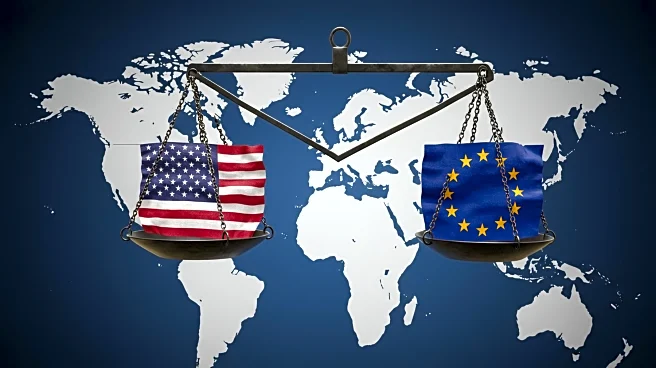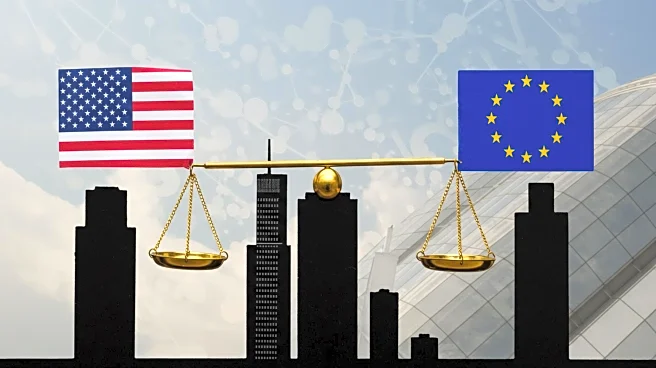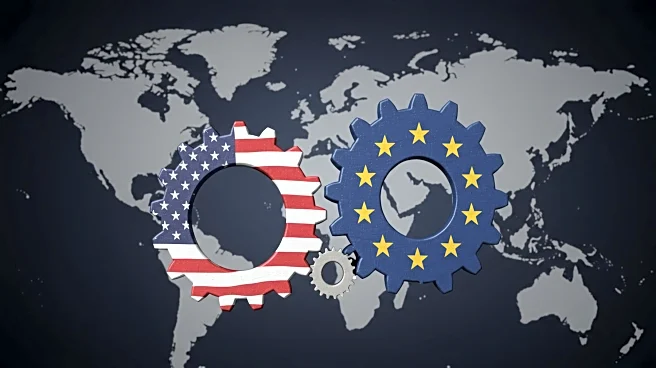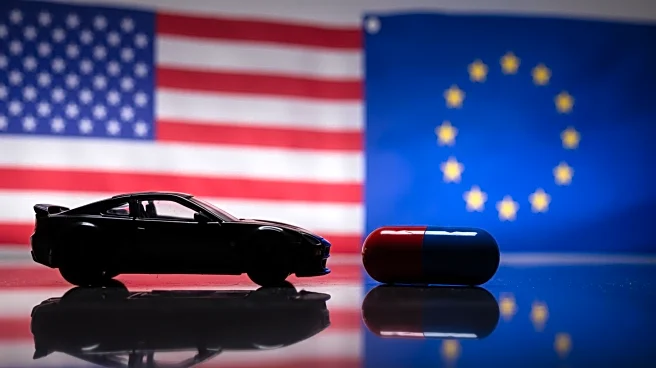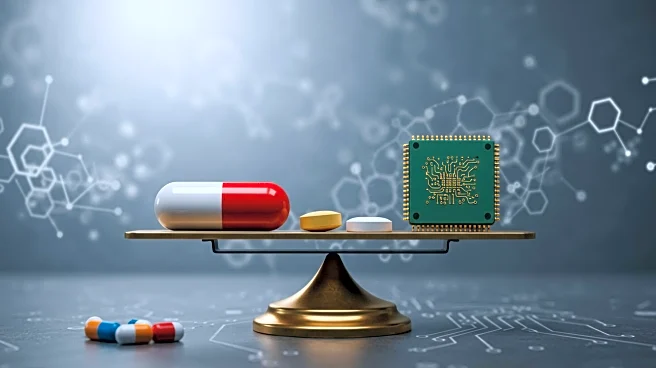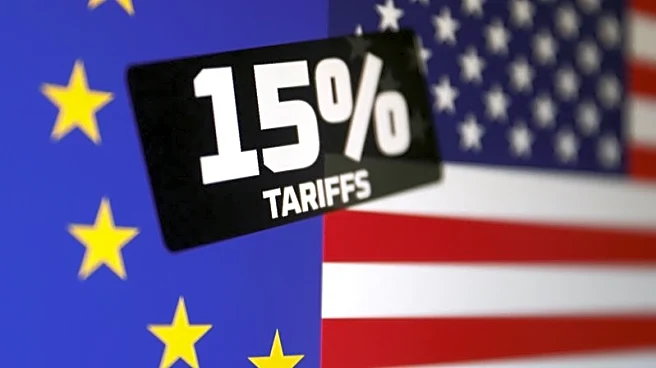What's Happening?
The United States and the European Union have announced new details regarding their trade agreement, initially outlined in July. The agreement includes a cap of 15% tariffs on pharmaceuticals, lumber, and semiconductors, with autos facing the same rate contingent upon EU legislative changes to reduce industrial duties. Despite providing clarity, the framework lacks specifics on certain sectors, such as wine and spirits, and raises concerns about rules of origin and customs procedures. EU Trade Commissioner Maros Sefcovic indicated that the framework is just the beginning, suggesting potential future changes.
Why It's Important?
The trade agreement is significant as it impacts various industries, including pharmaceuticals and automotive, which are crucial to both U.S. and EU economies. However, the lack of enforcement provisions and the potential for policy shifts by President Trump create uncertainty for businesses. This volatility could affect long-term strategic planning and economic stability, as companies may face unexpected tariff changes. The agreement's fragility poses risks for European businesses, which have traditionally relied on stable U.S. economic policies.
What's Next?
Businesses are left questioning the reliability of the agreement, with concerns about its potential dissolution. The absence of enforcement provisions means the deal could change at the discretion of the U.S. President, leading to possible future tensions and escalation. Companies may need to recruit tariff specialists to navigate new customs requirements, and stakeholders will closely monitor any changes in the agreement's implementation and enforcement.
Beyond the Headlines
The agreement highlights broader issues of trust and reliability in international trade relations, particularly with the U.S. The volatility in U.S. economic policies under President Trump challenges the traditional perception of the U.S. as a stable trade partner. This shift could have long-term implications for global trade dynamics and economic partnerships.
